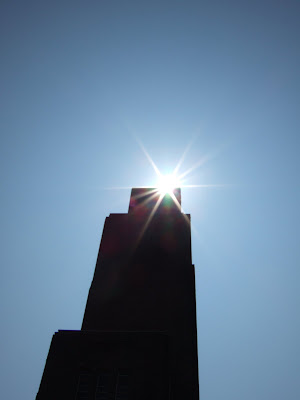
Although not one of London's better-known Modernist buildings, 66 Frognal in Hampstead is nevertheless an outstanding example of the style.
It was built in 1938 and designed by British architect Colin Lucas (1906-1988), who was a partner in the practice of Connell, Ward and Lucas. New Zealanders Connell and Ward had earlier collaborated on the acclaimed High and Over complex in Amersham before Lucas joined them in 1933.
The practice went out of existence when the war broke out the following year. After the war Colin Lucas joined the London County Council, working in the architecture division until 1977, when he retired.
© Christopher Seddon 2008




























